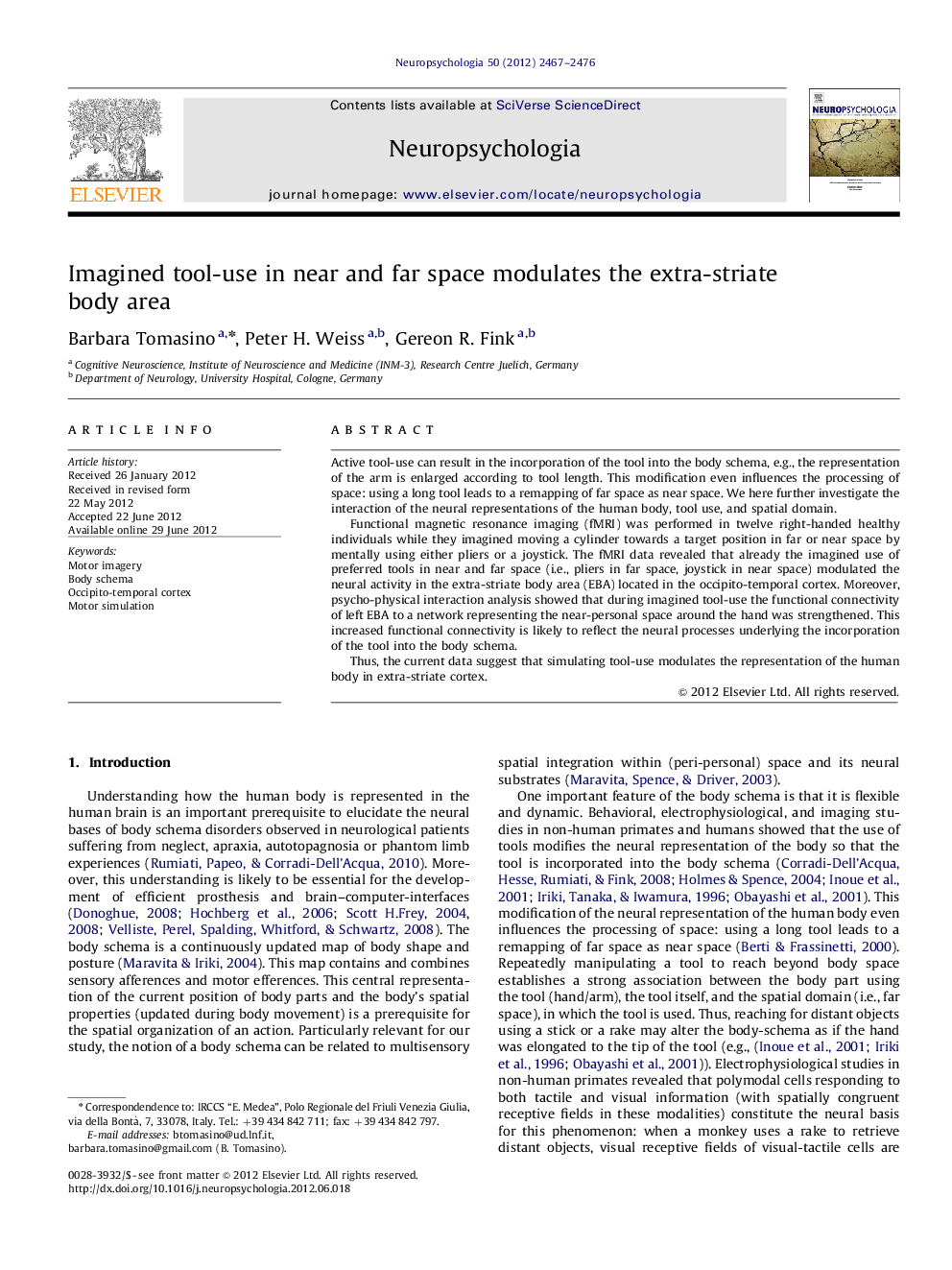| Article ID | Journal | Published Year | Pages | File Type |
|---|---|---|---|---|
| 944863 | Neuropsychologia | 2012 | 10 Pages |
Active tool-use can result in the incorporation of the tool into the body schema, e.g., the representation of the arm is enlarged according to tool length. This modification even influences the processing of space: using a long tool leads to a remapping of far space as near space. We here further investigate the interaction of the neural representations of the human body, tool use, and spatial domain.Functional magnetic resonance imaging (fMRI) was performed in twelve right-handed healthy individuals while they imagined moving a cylinder towards a target position in far or near space by mentally using either pliers or a joystick. The fMRI data revealed that already the imagined use of preferred tools in near and far space (i.e., pliers in far space, joystick in near space) modulated the neural activity in the extra-striate body area (EBA) located in the occipito-temporal cortex. Moreover, psycho-physical interaction analysis showed that during imagined tool-use the functional connectivity of left EBA to a network representing the near-personal space around the hand was strengthened. This increased functional connectivity is likely to reflect the neural processes underlying the incorporation of the tool into the body schema.Thus, the current data suggest that simulating tool-use modulates the representation of the human body in extra-striate cortex.
► Interaction of human body, tool use, and spatial domain representations. ► EBA represents the human body in a multisensory and dynamic manner. ► The imagined use of appropriate tools in near and far space modulated EBA. ► Simulating tool-use alters the representation of the human body in EBA.
